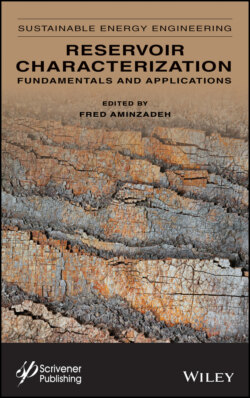Читать книгу Reservoir Characterization - Группа авторов - Страница 20
1.4.2 Primary Production Stage
ОглавлениеAs the primary production of the reservoir begins, the goal is to position wells at optimal locations that would maximize hydrocarbon recovery. During secondary recovery and then enhanced recovery process, the engineer’s objective is to maximize the volume of hydrocarbon contacted by injected fluids. This is to achieve maximum volumetric sweep efficiency for fluid production. To minimize cost and risk, engineers attempt to predict reservoir performance—for both planning and evaluation of hydrocarbon recovery projects. Reservoir description in terms of reservoir architecture, flow paths, and fluid-flow parameters are the key to reservoir engineering. Accurate prediction of reservoir production performance is predicated primarily on how well the reservoir heterogeneities are understood and have been modeled and applied for fluid-flow simulation. This stage requires integration of reservoir characterization models with reservoir simulation, history matching for production optimization. Reservoir management process conducts reservoir related studies and applies the results from fluid flow modeling in defining, updating and optimizing a development plan for producing the reservoir and forecast the production profile. This phase also involves optimization and management of reservoir performance evaluation, surveillance of fluid flow and changes in the reservoir that result in changes in the original distribution of physical properties. The optimization criteria can change during the life cycle of a producing reservoir. Managing the reservoir depletion is a dynamic process and the reservoir engineers constantly react and adapt to the changes as they evolve. Dynamic characterization is a representation of the fluid flow in a static reservoir model and needs to be validated with reservoir performance data.
